Willem Hoek
Solving the Jane Street Puzzle of May 2020; Expelled with OCaml
Jun 01, 2020
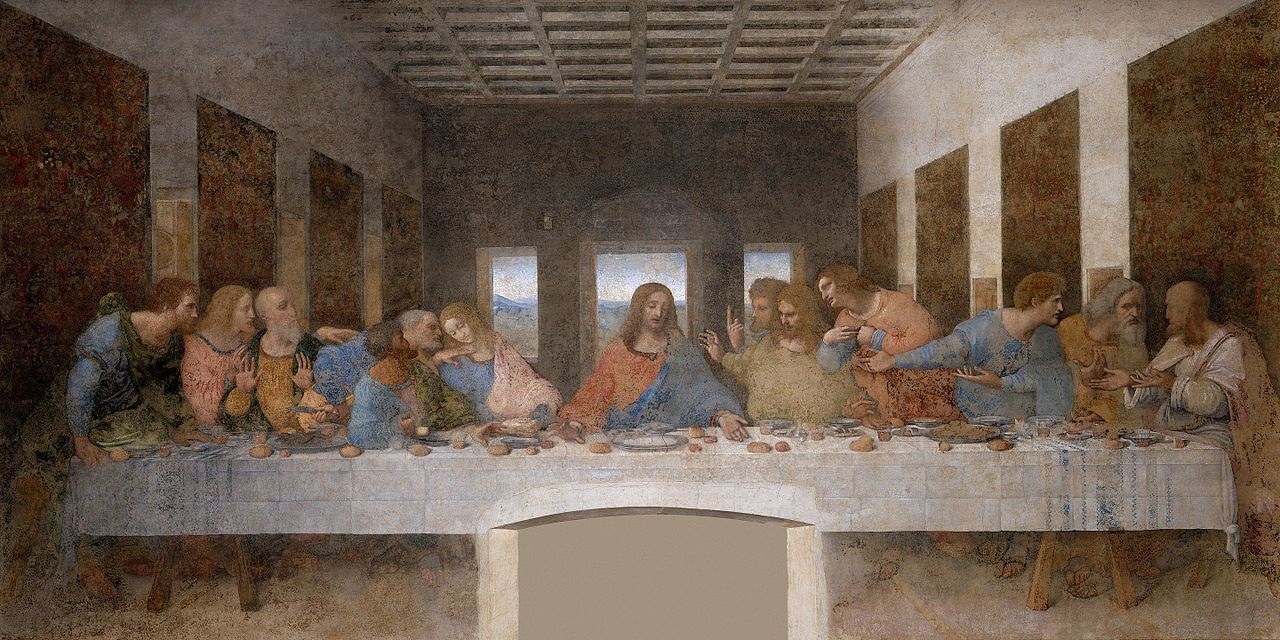
Leonardo da Vinci, The last Supper, 1495 - 1498
Expelled
Every month, Jane Street Capital post a puzzle on their website. This was the puzzle for May 2020.
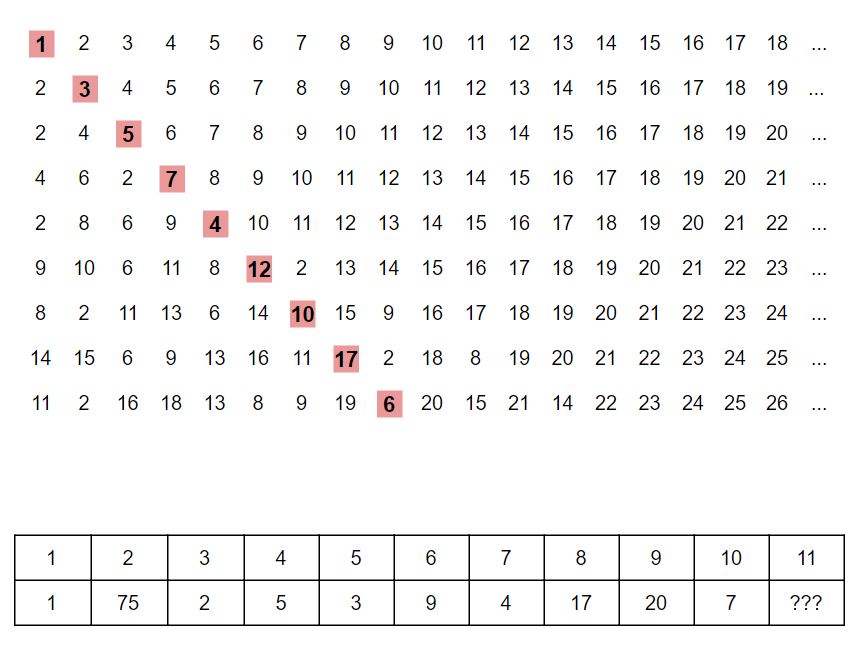
Approach
First, lets see how the table provided is composed.
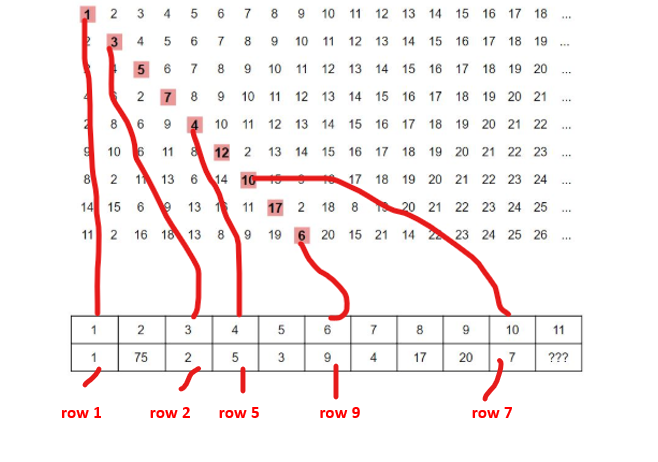
OK – so now we just need to find out what logic to use to add another row.
- The value to the left of the diagonal (in red) is the first column in next row
- The value to the right of the diagonal (in red) is the second column in next row
- And so it goes on (left / right / left / right) until all the values to the left have been transferred to the next row
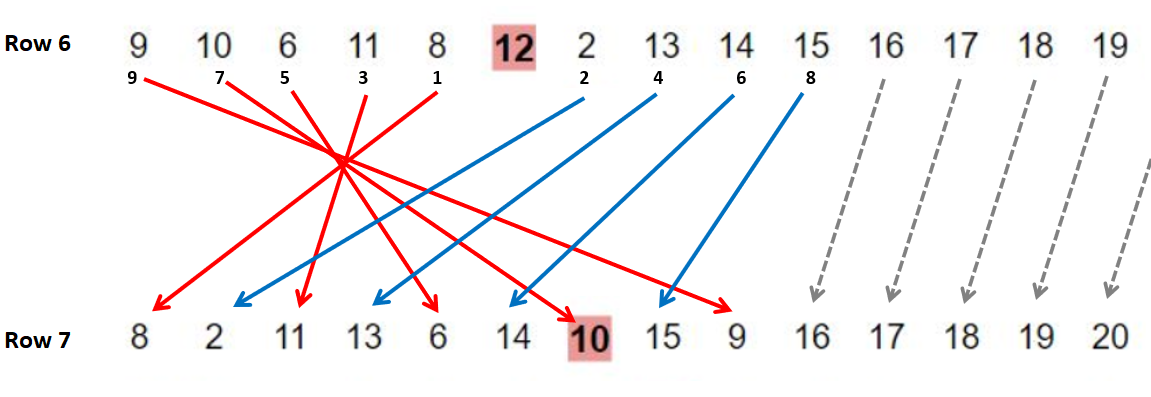
Solving with a few lines of code
Initially I thought of using Excel but writing a few lines of code was just SO much easier. Here are the final results.
Grid
----
1 2 3 4 5 6 7 8 9 10 11 12 13 14 15
2 3 4 5 6 7 8 9 10 11 12 13 14 15 16
2 4 5 6 7 8 9 10 11 12 13 14 15 16 17
4 6 2 7 8 9 10 11 12 13 14 15 16 17 18
2 8 6 9 4 10 11 12 13 14 15 16 17 18 19
9 10 6 11 8 12 2 13 14 15 16 17 18 19 20
8 2 11 13 6 14 10 15 9 16 17 18 19 20 21
14 15 6 9 13 16 11 17 2 18 8 19 20 21 22
11 2 16 18 13 8 9 19 6 20 15 21 14 22 23
Value Row
------ ----
1 1
2 75
3 2
4 5
5 3
6 9
7 4
8 17
9 20
10 7
11 416 <==== answer
12 6
13 132
14 27
15 11
Below is the code I used, which was done in OCaml. If you don’t have an OCaml compiler, you can execute the same code by using one of the online notebooks such as https://sketch.sh/new/ml.
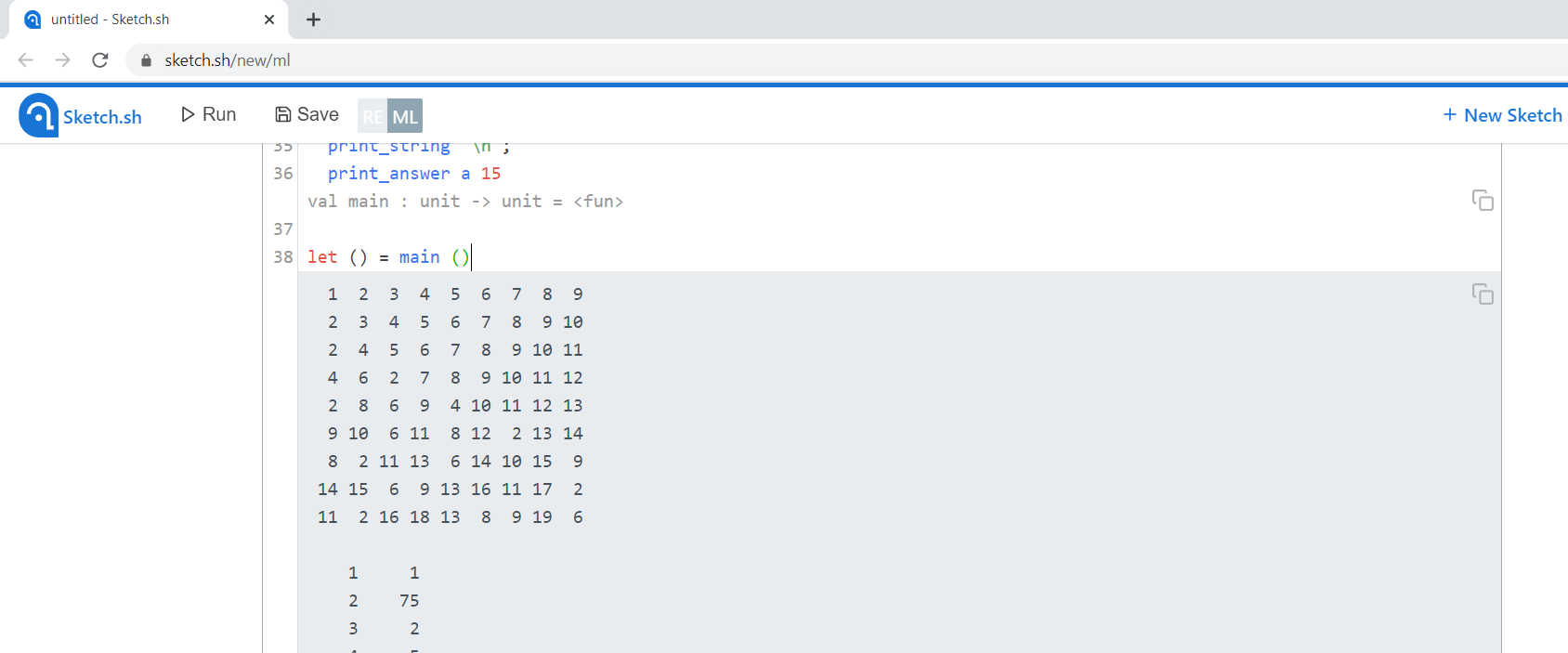
The create_grid function is actually all that is required. The bulk of code were simply to print the results.
let create_grid n =
(* create matrix with n numbers; y is rows, x is series of numbers *)
let grid = Array.init n
(fun y -> Array.init n
(fun x -> x + y - 1)) in
(* copy values from left & right of diagonal z to next row y *)
for z = 3 to n / 2 do
for x = 1 to z - 2 do
grid.(x * 2 - 1).(z) <- grid.(z - 1 - x).(z - 1); (* L *)
grid.(x * 2).(z) <- grid.(z - 1 + x).(z - 1); (* R *)
done
done;
grid
let print_grid grid size =
let min_size = min size (Array.length grid - 1) in
for y = 1 to min_size do
for x = 1 to min_size do
Printf.printf "%3i%!" grid.(x).(y)
done;
Printf.printf "\n%!"
done
let print_answer grid size =
for n = 1 to size do
for z = 1 to Array.length grid - 1 do
if n = grid.(z).(z)
then Printf.printf "%5i %5i \n%!" n z
done
done
let main () =
let a = create_grid 1000 in
print_grid a 9;
print_string "\n";
print_answer a 15
let () = main ()
Commands used to test and compile the code.
# testing
ocaml may.ml
# compile final version, not that it was required
ocamlopt -o may.exe may.ml
I submitted the answer on 2nd of May and my name was 30th on the list of “Correct Submissions” – so this was quite an easy question. Anyway, it still was a lot of fun. Thanks to Jane Street for posting this.
References and further reading
[1] Jane Street - Puzzle Archive.
https://www.janestreet.com/puzzles/archive/. Retrieved: 2020-05-02
[2] Source code for this post on Github.
https://github.com/whoek/janestreet-puzzles/tree/master/2020-05. Retrieved: 2020-06-01
[3] OCaml for Windows - Graphical Installer
https://fdopen.github.io/opam-repository-mingw/installation/. Retrieved 2020-05-02
[4] Arrays in Ocaml https://caml.inria.fr/pub/docs/manual-ocaml/libref/Array.html. Retrieved 2020-05-01
Similar Posts on this website
How-to Import an Excel file into SQLite and back to Excel again
Solving the Jane Street puzzle of December 2022
Why I created Scrumdog - a program to download Jira Issues to a local database
Jane Street puzzle Feb 2021 SOLVED! OCaml to the rescue
Solving the Jane Street puzzle of Dec 2020 - Backtracking with OCaml
Automate your Jira reporting with Python and Excel